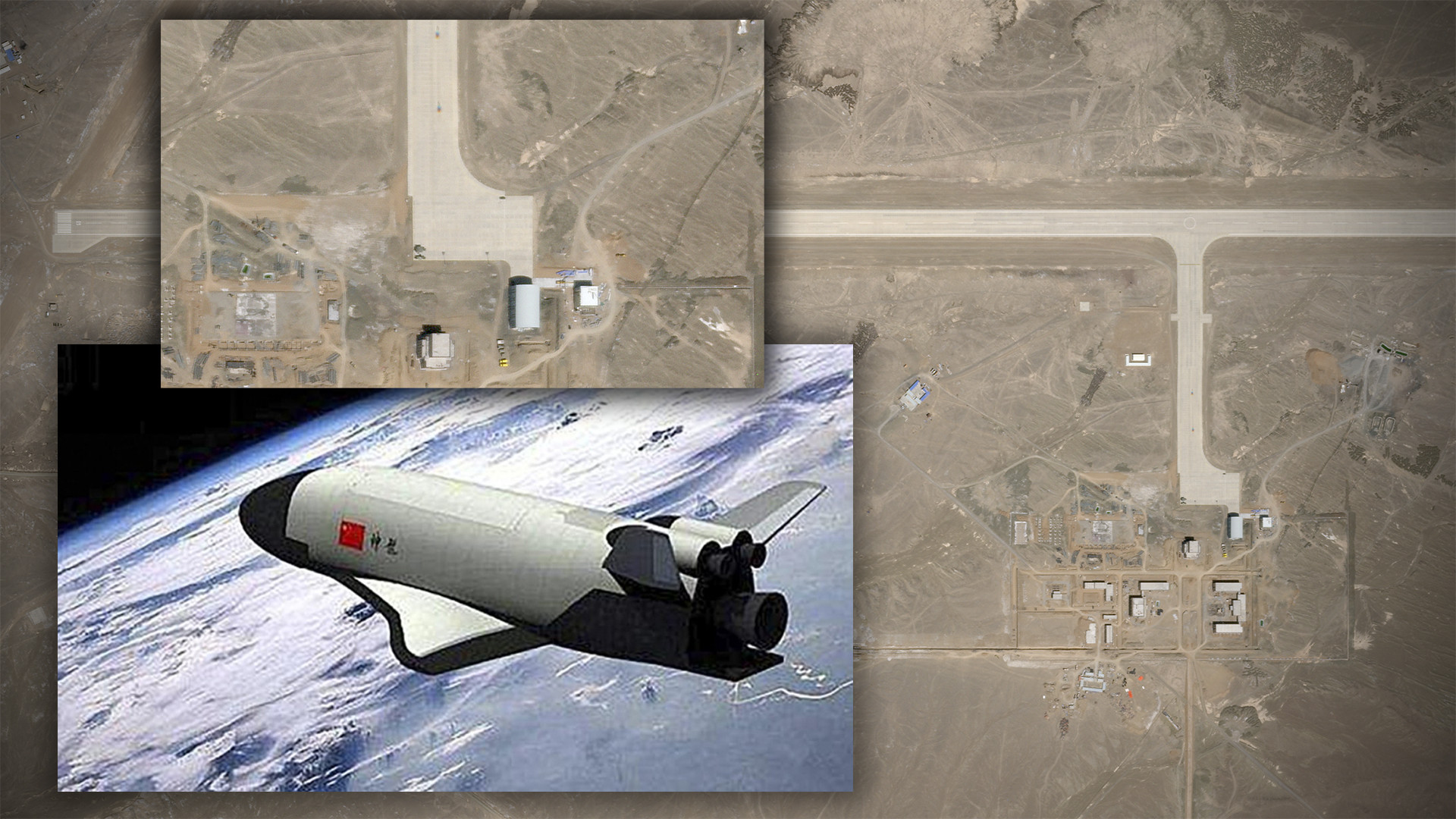Satellite imagery shows signs of activity on the runway and the main apron at a remote airstrip near China’s Lop Nor nuclear test site the day before the country’s public announcement of the launch of a reusable spaceplane into orbit. The aerospace vehicle is believed to be the same one, or at least be of a similar design, as the one Chinese tested in 2020 and that appeared to land at this base after spending approximately two days in orbit. Since that test, the small air base near Lop Nor has seen a notable expansion of its facilities, including the construction of a second small hangar.
Chinese state media reports say that the reusable spaceplane was launched sometime on the night of August 4-5, 2022, via a Long March 2F rocket fired from the Jiuquan Satellite Launch Center in the Gobi Desert, and successfully entered orbit. The U.S. Space Force and independent observers subsequently confirmed the launch.
A Long March 2F with an enlarged payload fairing on top, as seen in the tweet below, launched from Jiuquan was also used to put the reusable spaceplane into orbit in the 2020 test. No pictures appear to have emerged yet of the exact rocket configuration utilized in this new launch.
“The test spacecraft will be in orbit for a period of time before returning to the scheduled landing site in China, during which reusable and in-orbit service technology verification will be carried out as planned to provide technical support for the peaceful use of space,” Chinese authorities said regarding this new spaceplane test, according to a machine translation of a report today from state-run outlet Xinhua.
A satellite image of the air base near Lop Nor taken on August 3 that is available through Planet Labs shows vehicles and other heavy equipment on the main apron, in front of the second smaller hangar, and elsewhere immediately nearby, which do not appear to have been there in the preceding days. What may be additional heavy equipment is also seen on a pad adjacent to a turnaround area at the northern end of the runway.

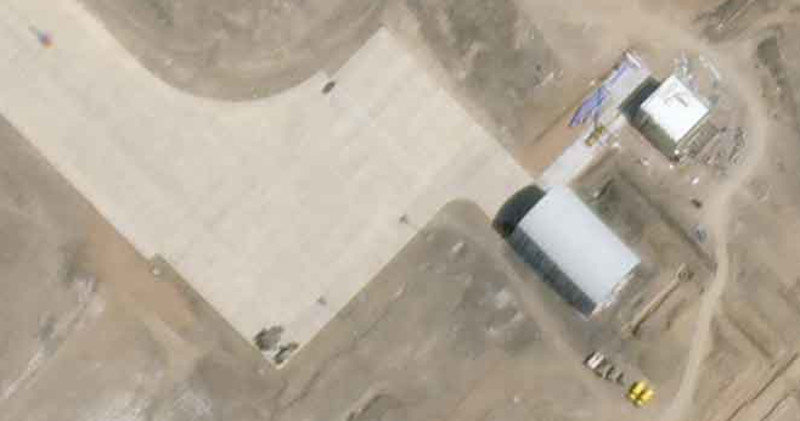
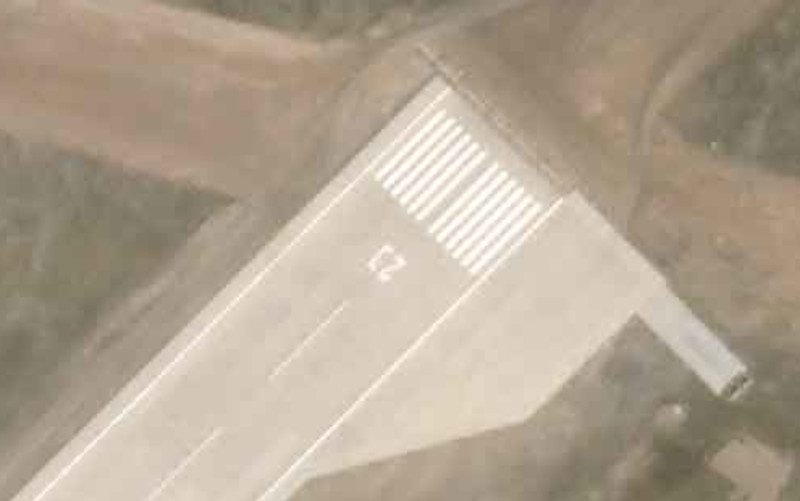
Additional imagery of this airfield that has now emerged online from Sentinel Hub, also taken on August 3, shows what may be objects of some kind on the runway, but the resolution is too low to speculate as to what they might be.
There are some similarities between all of this observed activity and what was seen in satellite imagery of the base after Chinese officials announced the spaceplane had landed at the conclusion of the 2020 test.

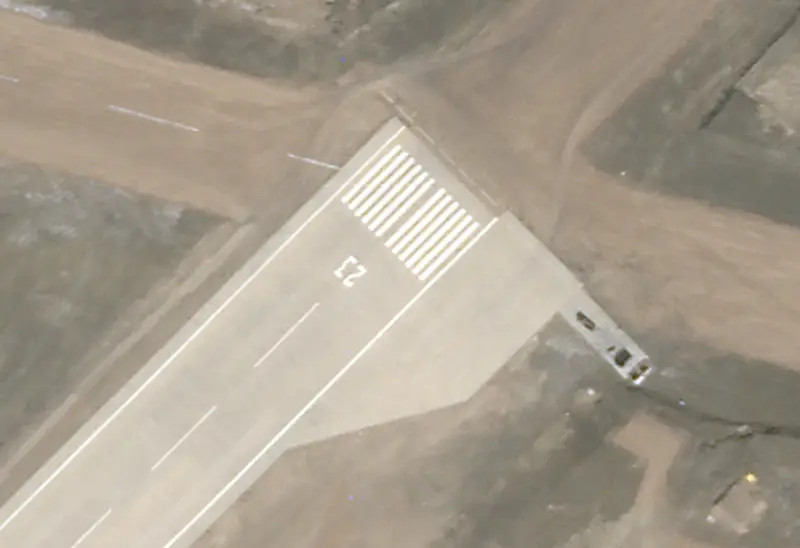
It is possible that this activity seen in the satellite imagery is linked to ongoing construction work at the base, which has already grown in important ways in the past two years. Beyond the additional hangar structure, there are a host of other new buildings, most of which appear to still be in various stages of construction. The majority of them are within an area with a now clearly demarcated rectangular boundary to the immediate southeast of the main apron. Some of them look to be intended for administrative and other support functions, while others look like they would be used for more specialized uses.

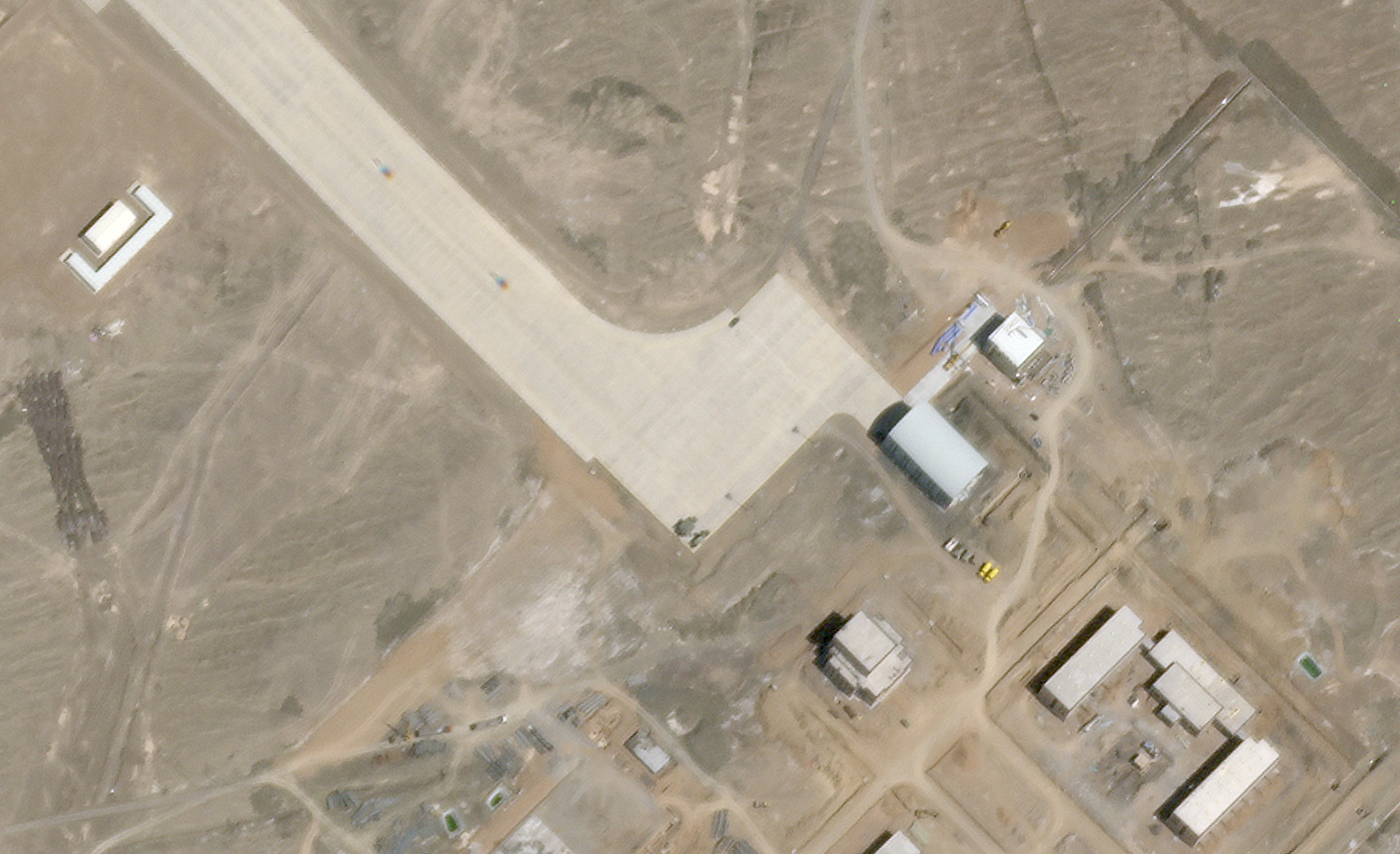
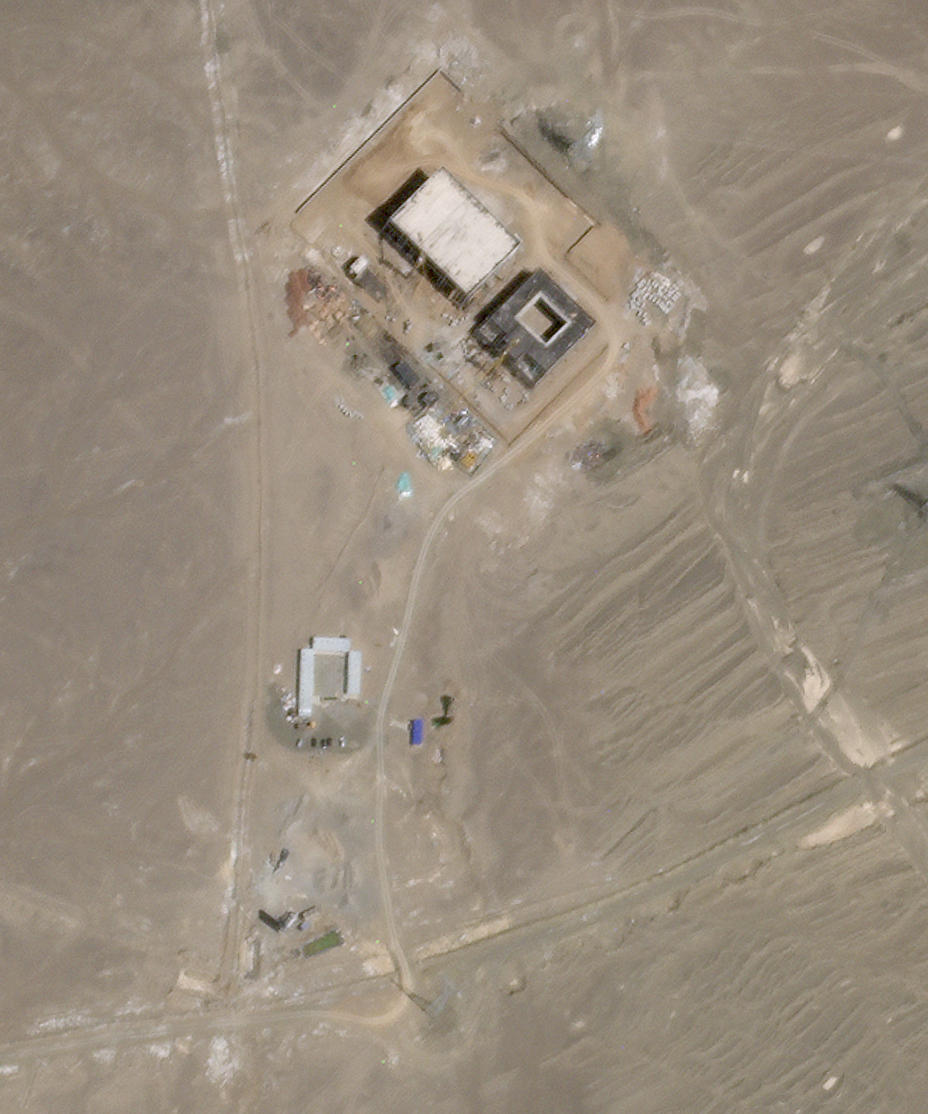
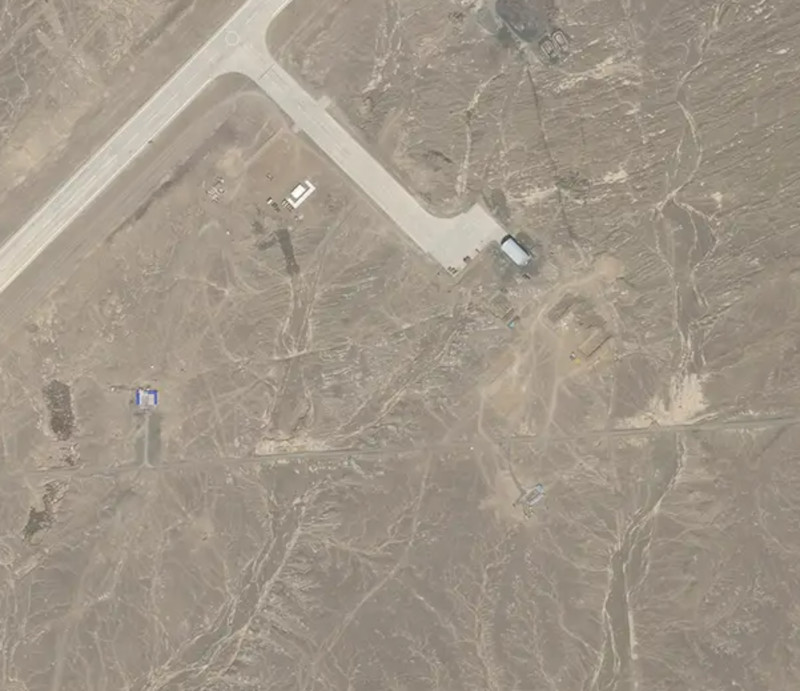
Whether or not any of the observed activity relates to possible preparations for the arrival of the spaceplane after its flight, the expansion effort that is clearly underway now underscores that the site has some general significance. Its main runway, one of the longest in the world at 16,400 feet, or just over 3 miles, is ideal for returning shuttle-like craft to land on. There are two other similarly-sized runway-like areas that are not paved, but that potentially could be as part of a broader expansion project, with the trio arranged in a triangular shape to accommodate any wind direction.
As for the spaceplane launch overnight, details remain extremely sparse. At least seven distinct objects were recorded flying into space in relation to the launch, including the spaceplane itself and the upper stage of the Long March 2F rocket. These remaining five objects could all simply be other parts of the Long March 2F and the payload fairing, as well as the adapter that held the spaceplane in place during the launch, or other innocuous debris.
Unknown signals do appear to be emanating from one of the tertiary objects. This is similar to what was observed after the 2020 spaceplane launch, too. While we don’t know what this might be related to, but observers who delved into the previous signal broadcast said that it appeared to contain only very limited data.
In terms of the spaceplane itself, there has long been speculation that the design may be related to a craft called Shenlong, images of which first emerged in 2017, and that may be similar at least in function, if not also in form, to the U.S. Space Force’s unmanned X-37B mini-shuttle.

The X-37Bs, only two of which have been built, are highly secretive craft in their own right, and information about their exact capabilities and how the U.S. military is employing them remains limited. The craft is currently assigned to a unit focused on “orbital warfare” missions and it is known to at least be an orbital testbed for a variety of different payloads, including a remote power-beaming system and potentially space-based weapons, as you can read more about here. One X-37B is also in space right now on its latest mission and broke its previous 780-day orbital endurance record last month.

Chinese government-owned aerospace enterprises are known to have multiple spaceplane projects in progress right now, including ones ostensibly aimed at future commercial applications, but which could also be used in military roles. This includes a design the China Aerospace Science and Technology Corporation, or CASC, said that it had successfully conducted a suborbital test of last year. That spaceplane was also launched from Jiuquan, but was publicly said to have landed at the Alxa Right Banner Badanjilin Airport, a regional commercial airport in Inner Mongolia.
Other relevant work could very well be occurring in the classified realm. For instance, the Chinese government is now known to have secretly tested an orbital bombardment weapon system of some kind last year that reportedly uses a hypersonic glide vehicle that is able to release payloads. The War Zone has explored the possibility in detail that this strategic weapon may be related, at least on some level, to the country’s reusable spaceplane developments. Chinese authorities had even tried to claim initially that reports about the space-based weapon testing were simply misinterpretations of spaceplane launches.
In a military context, a reusable spaceplane that lands like a conventional aircraft could be used for a variety of other tasks, as well. It might offer a way to more flexibly and rapidly put small satellites in orbit, test new technologies, and perform other space-based missions, such as intelligence-gathering, electronic warfare jamming, or even kinetic strikes. Serving in some fashion as an anti-satellite weapon is another possibility.
At the same time, it’s important to remember that spaceplanes have historically been shown to be complex and expensive craft to both design and operate. It remains to be seen if the spaceplane China says it is testing now will truly become a viable platform for routine use in any capacity.
Whether any additional official details about this latest spaceplane launch, which is already claimed to be in support of “the peaceful use of space,” despite the obvious potential military applications of such technology, emerge after it returns to Earth remains to be seen. If it does indeed land at the airstrip near Lop Nor, future satellite images may provide additional insights.
Contact the author: joe@thedrive.com
